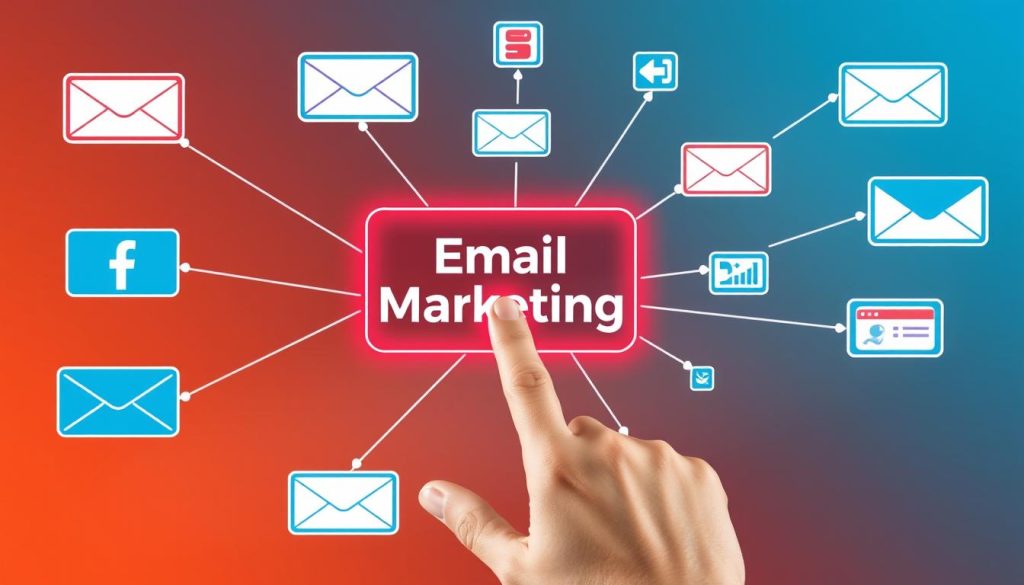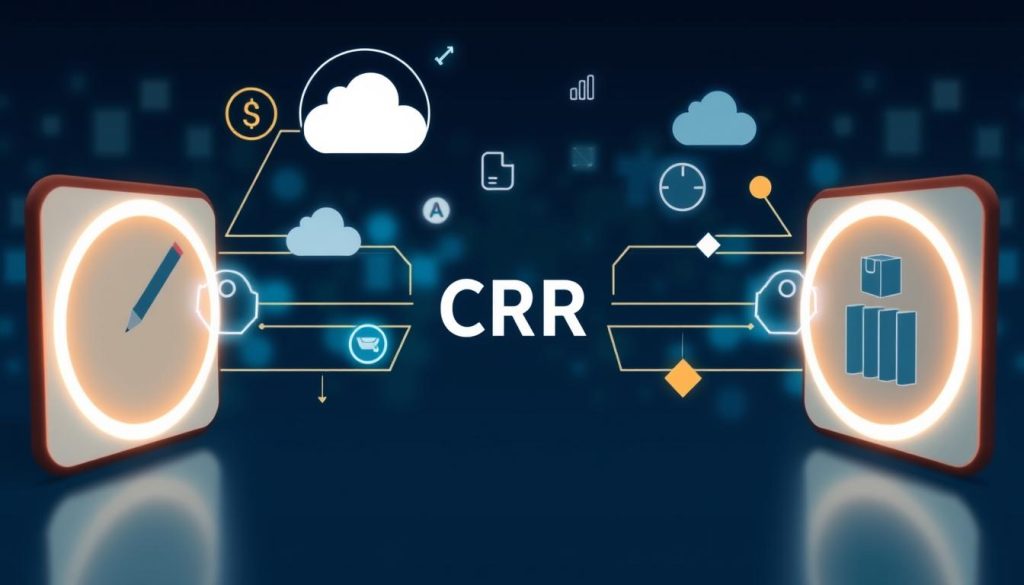In today’s digital landscape, businesses of all sizes are constantly seeking ways to capture valuable leads and drive conversions without breaking the bank. The good news is that there are a variety of cost-effective online lead capture methods available that can help you maximize your marketing efforts and reach your target audience. From optimizing your website for lead generation to leveraging the power of social media and email marketing, this article will explore a range of strategies that can boost your online lead capture efforts while staying within a tight budget.
Key Takeaways
- Discover effective online lead capture methods that are budget-friendly
- Learn how to optimize your website for improved lead generation
- Explore the benefits of leveraging social media platforms for lead capture
- Understand the role of email marketing in building a strong lead pipeline
- Discover how to measure and improve your lead capture efforts over time
What are Online Lead Capture Methods?
Online lead capture methods refer to the tactics and tools businesses use to collect contact information from potential customers who express interest in their products or services. Lead capture is a critical component of the sales funnel, as it allows businesses to nurture and convert these leads into paying customers.
Definition of Lead Capture
Lead capture is the process of acquiring a person’s contact information, such as their name, email address, and phone number, in exchange for something of value, like a free ebook, a consultation, or a discount. By gathering this information, businesses can then follow up with leads and guide them through the sales process.
Importance of Lead Generation
Lead generation is essential for the growth and success of a business. It allows companies to build a pipeline of potential customers who have already shown an interest in what they offer. By nurturing these leads, businesses can increase their chances of converting them into sales, ultimately driving revenue and profitability.
- Online lead capture methods help businesses acquire valuable contact information from interested prospects.
- Lead capture is a crucial part of the sales funnel, enabling companies to nurture and convert leads into paying customers.
- Effective lead generation is vital for a business’s growth and success, as it provides a steady stream of potential customers to market to.
“The quality of your leads is directly proportional to the quality of your business.” – Brian Tracy
Cost-Effective Online Lead Capture Methods
When it comes to budget-friendly lead capture and low-cost lead generation, there are several affordable lead capture tactics that businesses can leverage to boost their cost-effective digital marketing efforts. In this section, we’ll explore a range of strategies that can help you generate leads without breaking the bank.
One of the most cost-effective methods is to utilize free or low-cost tools for lead capture. This can include popular platforms like MailChimp, HubSpot, or Sumo, which offer budget-friendly solutions for building email lists, creating lead capture forms, and tracking user engagement. By taking advantage of these tools, you can generate leads and capture contact information without the need for a large marketing budget.
Another affordable lead capture tactic is to focus on optimizing your website for lead generation. This can involve implementing clear calls-to-action, creating lead magnets (such as e-books, webinars, or free trials), and ensuring your website has a user-friendly design that encourages visitors to share their information. By cost-effectively enhancing your website, you can capture leads and grow your customer base without extensive financial resources.
| Tactic | Description | Cost |
|---|---|---|
| Free/Low-Cost Tools | Utilize platforms like MailChimp, HubSpot, or Sumo for lead capture | $0 – $50/month |
| Website Optimization | Implement clear CTAs, lead magnets, and user-friendly design | $0 – $500 (one-time) |
| Social Media Marketing | Leverage platforms like Facebook, LinkedIn, or Instagram to capture leads | $0 – $500/month |
By implementing these budget-friendly lead capture strategies, businesses can generate leads and grow their customer base without the need for a large marketing budget. The key is to focus on cost-effective digital marketing tactics that deliver maximum impact with minimal investment.

Optimizing Your Website for Lead Capture
Your website is often the first point of contact between your business and potential customers. To effectively capture leads, it’s crucial to optimize your website by creating a user-friendly design and implementing clear calls-to-action that encourage visitors to provide their contact information.
User-Friendly Design
The user experience on your website plays a significant role in lead capture. Ensure your website is easy to navigate, with a clean and intuitive layout. Prioritize the placement of key information and calls-to-action, making them readily accessible to your visitors. Additionally, optimize your website for mobile responsiveness, as an increasing number of users access websites from their smartphones and tablets.
Clear Calls-to-Action
Effective calls-to-action for lead generation are the cornerstone of a successful lead capture website design. Strategically position these calls-to-action throughout your website, encouraging visitors to take the desired action, such as filling out a form, downloading a resource, or scheduling a consultation. Use clear and compelling language that resonates with your target audience and aligns with their needs.
By prioritizing website optimization for lead capture and user experience for lead capture, you can effectively turn your website into a lead generation powerhouse, capturing the attention and information of potential customers.
Leveraging Social Media Platforms
In the digital age, social media platforms have become a powerful tool for businesses to capture and generate leads in a cost-effective manner. By leveraging the vast user bases and targeted advertising capabilities of platforms like Facebook, LinkedIn, and Instagram, companies can reach a wider audience and engage potential customers like never before.
One of the key advantages of using social media lead capture is the ability to create highly targeted and personalized campaigns. Platforms often provide detailed demographic and behavioral data, allowing businesses to craft compelling content and offers that resonate with their ideal customers. This targeted approach can lead to higher conversion rates and a more efficient use of marketing budgets.
Moreover, social media lead generation strategies can be highly cost-effective compared to traditional advertising channels. Many social platforms offer affordable advertising options, such as sponsored posts or targeted ads, that can be easily integrated into an overall social media marketing plan. By carefully optimizing these campaigns and tracking their performance, businesses can maximize their return on investment.
When it comes to social platforms for lead capture, the options are vast and varied. LinkedIn, for instance, is an invaluable resource for B2B lead generation, thanks to its professional user base and advanced targeting capabilities. Facebook, on the other hand, offers a wide range of opportunities for consumer-focused lead capture, with features like lead generation forms and targeted ads.
Ultimately, the key to success in leveraging social media for lead capture lies in a well-executed, data-driven strategy that aligns with the unique needs and goals of your business. By combining creative content, targeted advertising, and a deep understanding of your audience, you can unlock the full potential of these powerful social media lead capture and social media lead generation platforms.
Email Marketing Strategies
In the digital age, email marketing has emerged as a powerful and cost-effective tool for capturing and nurturing leads. By building a high-quality email list and crafting engaging newsletters, businesses can effectively connect with their target audience and encourage them to take action.
Building an Email List
Crafting a robust email list is crucial for successful email marketing for lead capture. To build your list, consider utilizing various lead capture strategies, such as offering valuable content, running contests or giveaways, and prominently displaying opt-in forms on your website. Ensure that your sign-up process is straightforward and user-friendly, making it easy for visitors to provide their contact information.
Crafting Engaging Newsletters
Once you have built your email newsletter lead generation list, the next step is to create content that resonates with your audience. Craft engaging newsletters that provide genuine value, such as industry insights, exclusive offers, or informative tips. Personalize your emails, use eye-catching visuals, and include clear calls-to-action to encourage recipients to interact with your brand.
By implementing these cost-effective email marketing strategies, you can effectively capture and nurture leads, ultimately driving business growth and success.

Content Marketing for Lead Generation
In the digital age, content marketing has become a powerful tool for businesses looking to capture valuable leads. By creating informative, engaging content, companies can attract their target audience and encourage them to provide their contact information. Two key components of this strategy are blogging and search engine optimization (SEO).
Blogging for Lead Generation
Blogging allows businesses to showcase their expertise, address their audience’s pain points, and position themselves as thought leaders in their industry. By consistently publishing high-quality, SEO-optimized content, companies can attract a steady stream of potential leads. Effective blog posts not only educate and entertain readers but also include clear calls-to-action that encourage them to share their contact information.
Leveraging SEO for Lead Capture
Optimizing your content for search engines is crucial for cost-effective content marketing and lead generation. By conducting keyword research, crafting SEO-friendly blog posts, and building backlinks, businesses can increase their visibility in search engine results. This, in turn, drives more qualified traffic to their website, where they can then implement strategic lead capture tactics such as gated content, newsletter sign-ups, and contact forms.
| Tactic | Description | Benefits |
|---|---|---|
| Blogging | Regularly publishing informative, engaging content | Establishes industry expertise, attracts target audience, and generates qualified leads |
| SEO | Optimizing content and website for search engines | Increases visibility, drives qualified traffic, and supports cost-effective content marketing for lead capture |
By leveraging the power of content marketing, particularly through blogging and SEO, businesses can create a sustainable and cost-effective lead generation strategy that attracts their ideal customers and converts them into valuable leads.
“Content marketing is the new advertising. It’s about creating valuable experiences that have a direct impact on your audience’s lives.”
Paid Advertising Channels
In today’s digital landscape, paid advertising has become a powerful tool for businesses to capture leads in a cost-effective manner. By leveraging various paid advertising channels, companies can reach their target audience and generate valuable leads without breaking the bank.
One of the most popular paid advertising channels is search engine marketing (SEM). By optimizing their ad campaigns for relevant keywords, businesses can ensure that their ads appear at the top of search engine results pages, increasing the chances of capturing the attention of potential leads.
Social media advertising is another effective lead generation strategy. Platforms like Facebook, Instagram, and LinkedIn offer powerful targeting options, allowing businesses to reach their ideal customers with laser-like precision. By creating engaging ad content and leveraging the power of social media, companies can effectively generate leads through paid campaigns.
In addition to SEM and social media advertising, display advertising can also be a valuable digital advertising tool for lead capture. By strategically placing ads on relevant websites and online publications, businesses can reach a wider audience and increase their chances of attracting potential leads.
When it comes to paid advertising for lead capture, the key is to find the right balance between cost and effectiveness. By carefully analyzing their target audience, crafting compelling ad content, and optimizing their campaigns, businesses can leverage cost-effective paid ads to generate leads and drive business growth.

Ultimately, paid advertising is a versatile and cost-effective strategy that can help businesses of all sizes capture valuable leads and fuel their growth. By staying up-to-date with the latest trends and best practices, companies can unlock the full potential of digital advertising for lead capture.
Analyzing and Improving Lead Capture Efforts
To ensure the effectiveness of your cost-effective online lead capture methods, it’s essential to track and measure your performance. By analyzing key metrics, you can gain valuable insights into the success of your lead generation strategies, allowing you to optimize and refine your approach for maximum impact.
Tracking and Measuring Success
When it comes to lead capture performance analysis, there are several crucial metrics to consider:
- Lead capture rate: The percentage of website visitors who complete your lead capture form or sign up for your offer.
- Lead conversion rate: The percentage of leads that ultimately convert into customers or sales.
- Cost per lead: The total cost of your lead generation efforts divided by the number of leads generated.
- Lead quality: The proportion of leads that are qualified and likely to become customers.
By closely monitoring these metrics for measuring lead generation success, you can identify the strengths and weaknesses of your current lead capture strategies and make data-driven decisions to optimize lead capture efforts.
“Measuring the success of your lead capture efforts is crucial for making informed decisions and driving continuous improvement.”
Additionally, you can leverage web analytics tools and CRM data to gain a deeper understanding of your lead capture performance, such as the source of leads, the content or offers that are most effective, and the factors that influence conversion rates.
By adopting a data-driven approach to lead capture improvement, you can identify areas for optimization, refine your strategies, and ultimately drive more qualified leads and better business outcomes.
Integration with CRM Systems
Integrating your online lead capture methods with a customer relationship management (CRM) system can be a game-changer for your business. By leveraging the power of CRM integration, you can streamline your lead management processes and enhance your overall cost-effective lead capture and conversion efforts.
CRM systems are designed to help businesses manage lead capture, lead management through CRM, and customer data in a centralized, organized manner. By integrating your online lead capture tools with a CRM, you can seamlessly capture, store, and access valuable information about your leads, improving your ability to nurture and convert them into paying customers.
Benefits of CRM Integration
- Centralized Lead Data: Consolidate all lead information in one place, making it easier to access and manage.
- CRM-powered lead generation: Leverage CRM data to optimize your lead capture strategies and generate more qualified leads.
- Improved Lead Nurturing: Use CRM tools to automate and personalize your lead nurturing campaigns, leading to higher conversion rates.
- CRM integration for lead capture: Seamlessly capture and sync lead data from your website, social media, and other online channels directly into your CRM.
By integrating your online lead capture methods with a powerful CRM system, you can unlock a more efficient and cost-effective lead capture process, ultimately driving better business outcomes and growth.

“Integrating our lead capture tools with a CRM has been a game-changer for our business. We’ve seen a significant improvement in our lead management and conversion rates.”
Lead Nurturing and Conversion
Capturing leads is just the first step in the sales process. To ensure that these leads convert into paying customers, businesses must implement effective lead nurturing strategies. Lead nurturing involves guiding potential customers through the sales funnel, building relationships, and providing valuable content to keep them engaged and interested in your products or services.
One key aspect of lead nurturing is converting leads to customers. By understanding the unique needs and pain points of your leads, you can tailor your messaging and offers to address their specific concerns. This personalized approach can help build trust and increase the likelihood of conversion.
Effective lead capture and conversion strategies often involve a combination of tactics, such as email marketing, content marketing, and personalized follow-ups. By optimizing lead capture for conversion, businesses can ensure that their lead generation efforts translate into tangible sales and revenue.
To illustrate the importance of lead nurturing, consider the following statistics:
“Nurtured leads produce, on average, a 20% increase in sales opportunities compared to non-nurtured leads.” – Demand Gen Report
By implementing a strategic, data-driven approach to lead nurturing, businesses can effectively convert more leads into loyal customers, ultimately driving cost-effective capture and growth.
| Lead Nurturing Tactic | Description | Conversion Rate |
|---|---|---|
| Personalized Email Campaigns | Tailored email content and offers based on lead behavior and interests | 20-30% |
| Targeted Content Marketing | Providing valuable, relevant content to address leads’ pain points | 15-25% |
| Automated Drip Campaigns | Scheduled series of emails to nurture leads over time | 10-20% |
By leveraging these effective lead nurturing tactics, businesses can convert more leads into customers, ultimately driving sustainable growth and revenue.
Conclusion
In conclusion, this article has provided a comprehensive overview of various cost-effective online lead capture methods that businesses can implement to generate and convert leads without a large marketing budget. By optimizing their websites, leveraging social media and email marketing, creating valuable content, and integrating with CRM systems, businesses can effectively capture and nurture leads in a budget-friendly manner.
The key takeaways for lead generation include the importance of a user-friendly website design, clear call-to-actions, strategic use of social media platforms, and the power of content marketing. Additionally, businesses can leverage email marketing to build and engage with their audience, while paid advertising channels can provide targeted reach and visibility.
Ultimately, by applying these strategies, businesses can achieve their lead generation goals and drive sustainable growth, even with a limited marketing budget. The final thoughts on budget-friendly lead capture emphasize the need for a holistic, data-driven approach to continuously analyze and improve lead capture efforts, ensuring maximum return on investment.




